Marta Molina (Text) and Moysés Zúñiga (Photos)
Translated by Julie Ann Ward
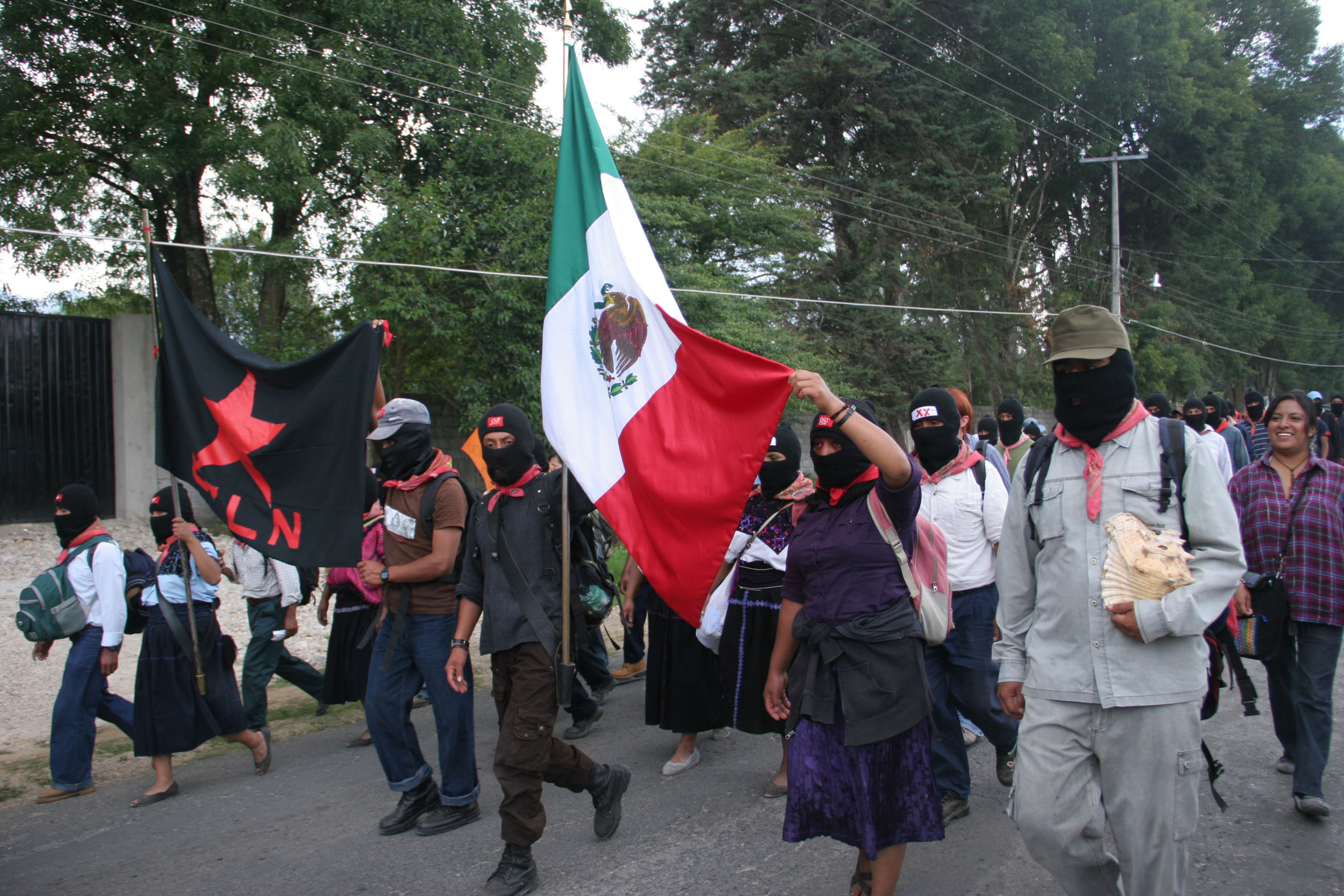
May 7, 2011. San Cristóbal de Las Casas, Chiapas, Mexico. Photo: Moysés Zúñiga, 2011.
The most deafening silence in recent years occurred in Mexico on 7 May, 2011, the afternoon when 30,000 men and women of the five caracoles (autonomous Zapatista municipalities) marched in San Cristóbal de Las Casas.
Indigenous people lead the march. They cut the wind in two with the Zapatista flag, the Mexican flag, and the flag of their caracol, which are the strength of those expressing their rejection of Felipe Calderón’s violent war allegedly against drug trade, but ultimately against the Mexican people.
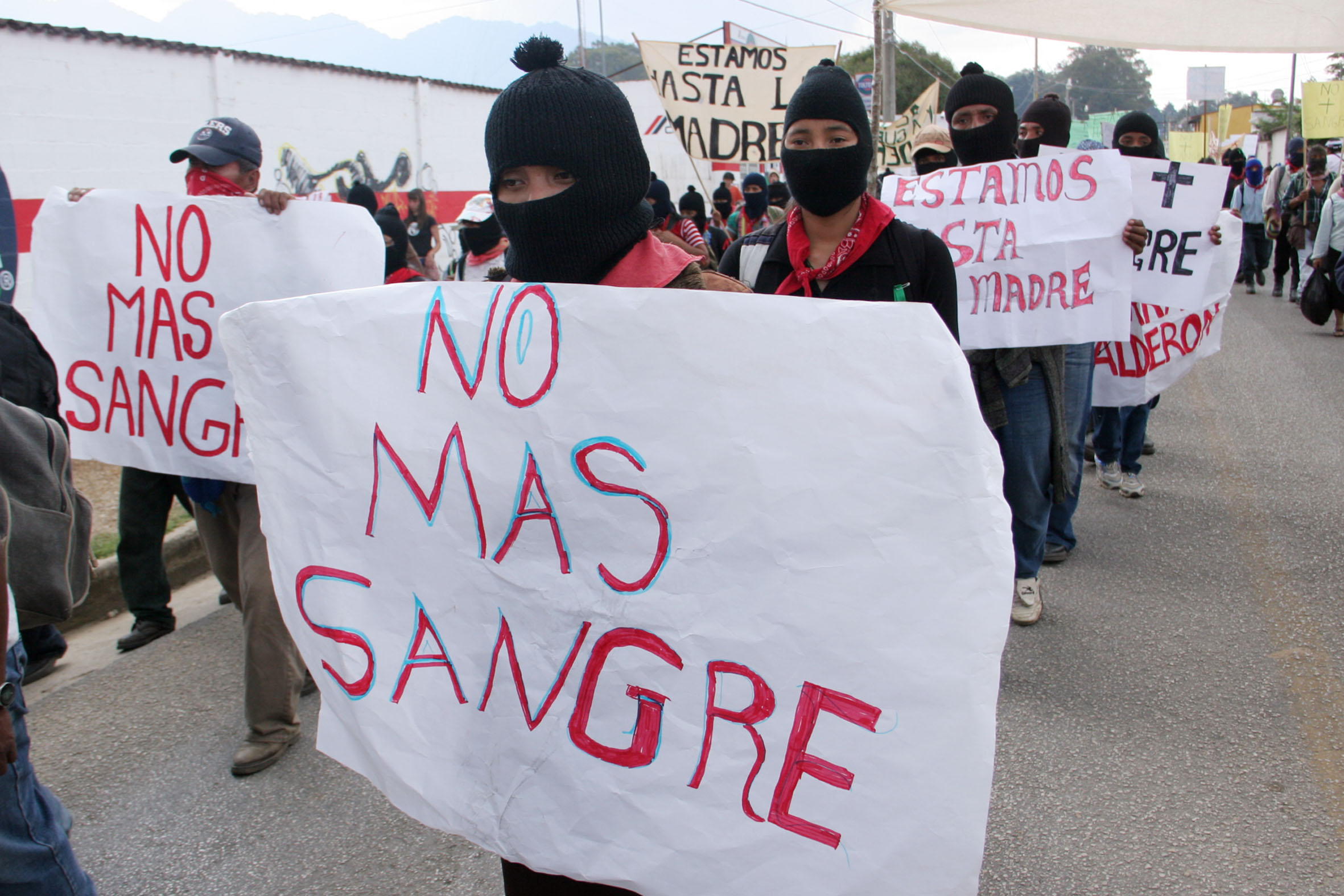
May 7, 2011. San Cristóbal de Las Casas, Chiapas, Mexico. Photo: Moysés Zúñiga, 2011.
The young faces behind the masks are a new generation of indigenous revolutionaries that defend their territory through the example of autonomy: an example of the most perfect organization, impenetrable by the generalized violence in the country.
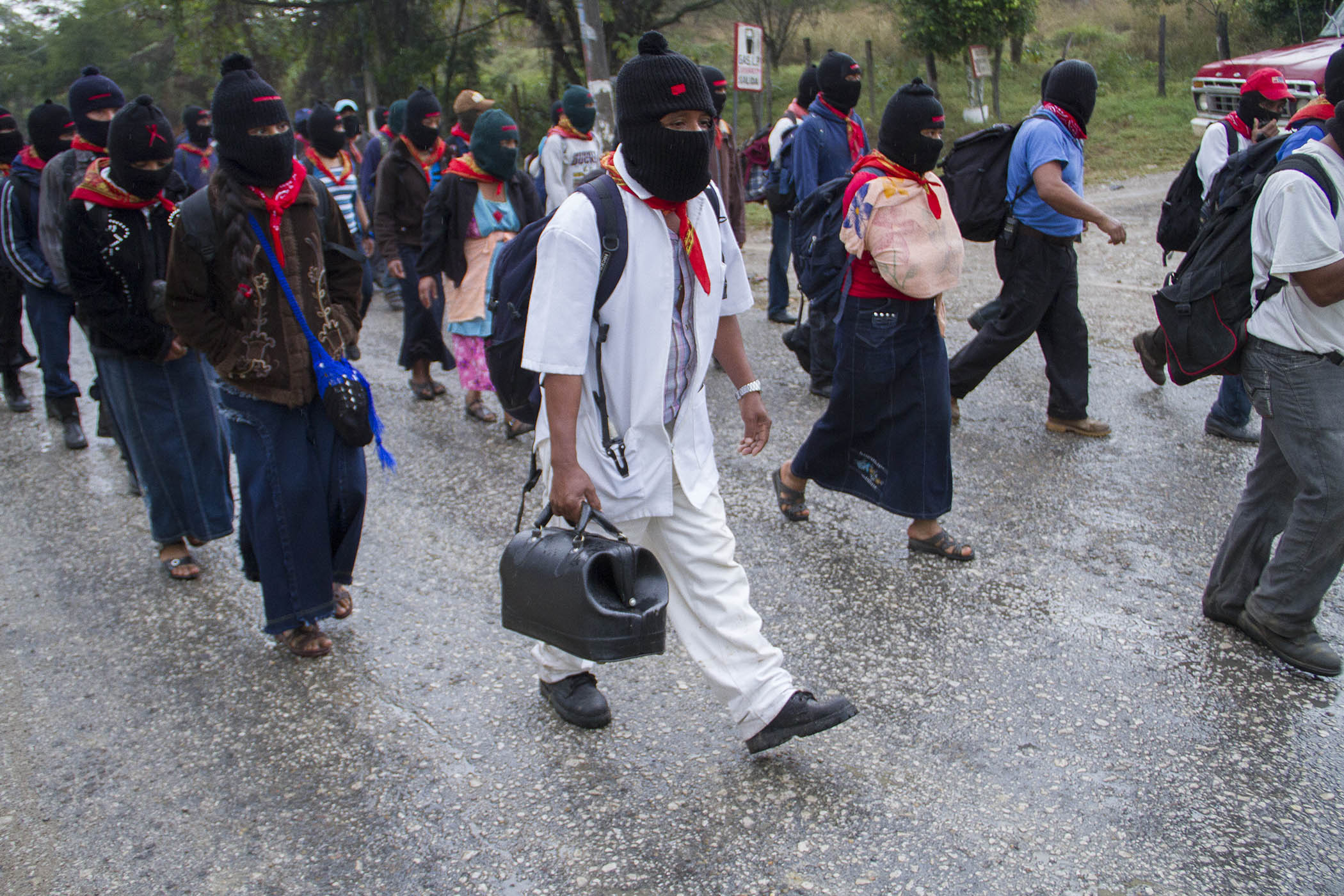
December 21, 2012. Ocosingo, Chiapas (Región Selva), Mexico. Photo: Moysés Zúñiga, 2012.
Zapatista health promoters accompanied the contingents of the jungle region in Ocosingo, treating cases of moderate dehydration. It is essential for the indigenous peoples to have their own health system in which the state—which wants to govern their bodies and their diet, thereby impairing their quality of life—does not intervene.
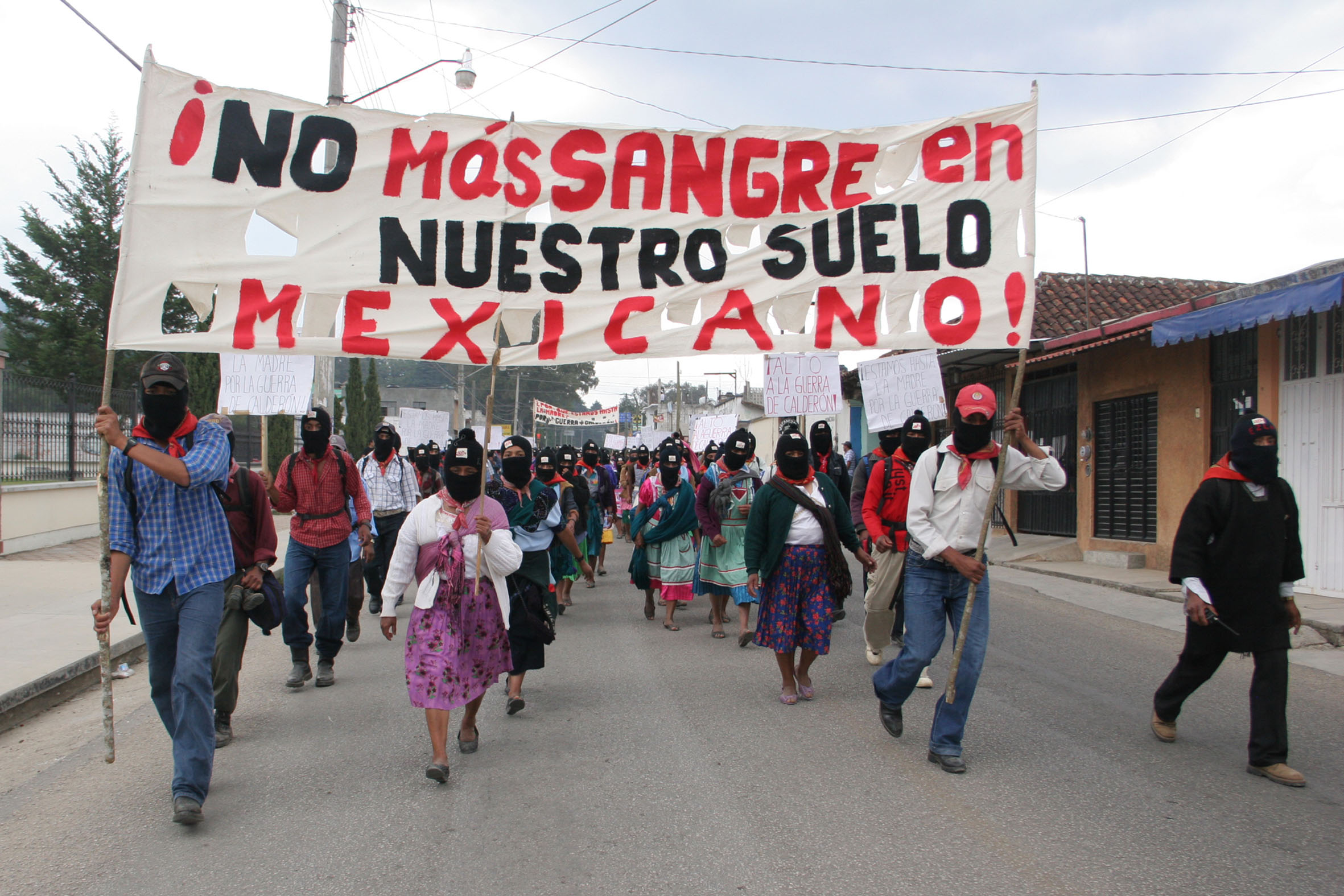
May 7, 2011. San Cristóbal de Las Casas, Chiapas, Mexico. Photo: Moysés Zúñiga, 2011.
"No more blood in our Mexican soil" are the words that are also the flag of the Mayan men and women who carry the voice of all Mexicans who have suffered enforced disappearances, executions, rapes, and kidnappings—collateral damage of the alleged drug war in Mexico.
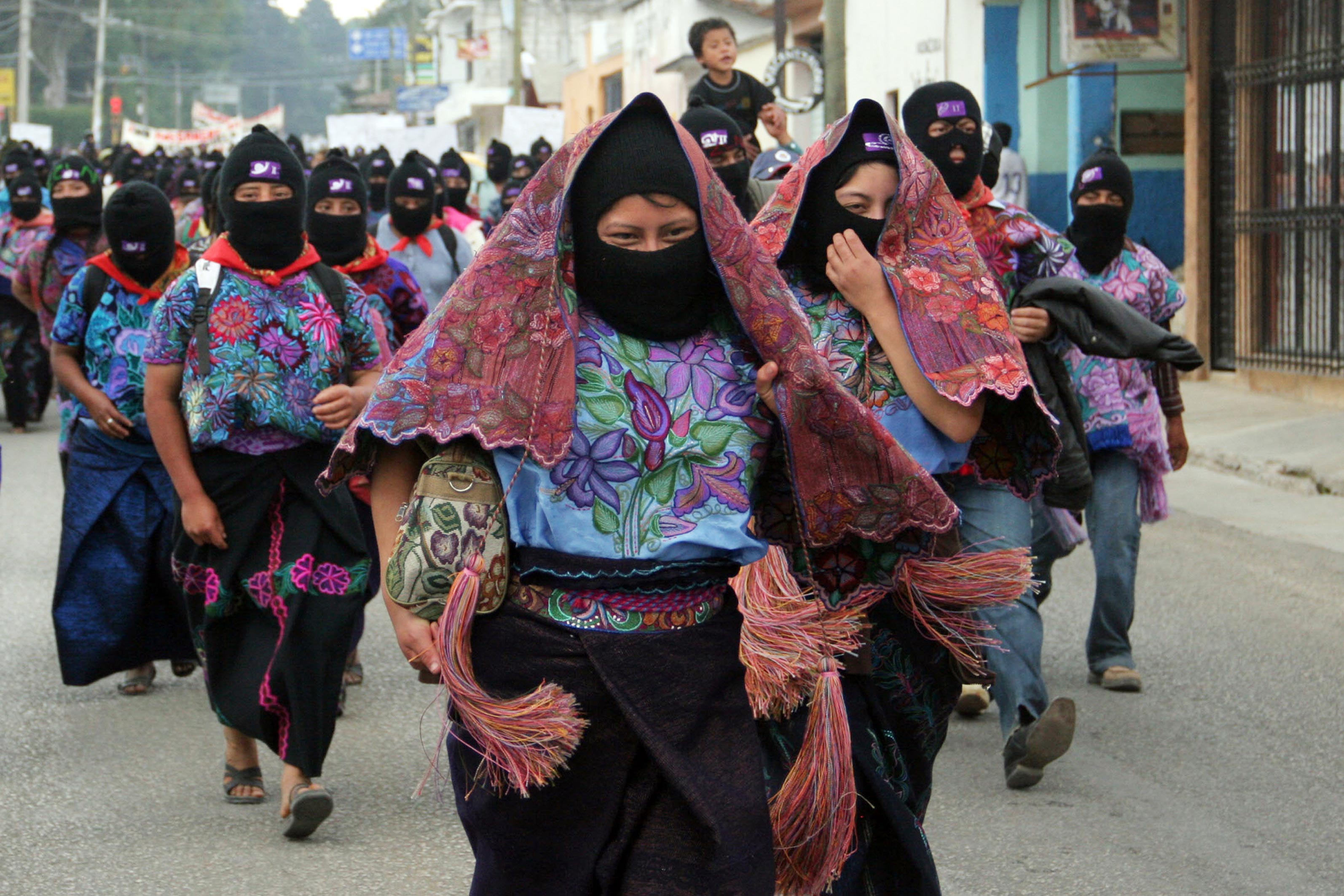
May 7, 2011. San Cristóbal de Las Casas, Chiapas, Mexico. Photo: Moysés Zúñiga, 2011.
The Tzotzil women of the Región Altos (high mountains), mainly dedicated to the production of ornamental flowers, carry with their traditional, regional dresses skirts made from sheep wool to withstand low temperatures and hercail (capes) with hand-embroidered flowers.

May 7, 2011. San Cristóbal de Las Casas, Chiapas, Mexico. Photo: Moysés Zúñiga, 2011.
The indigenous women of Oventic, the central heart of the Zapatistas, are among the 28 contingents that marched across the city, which had not seen such a demonstration of civil and military organization since 1 January, 1994.
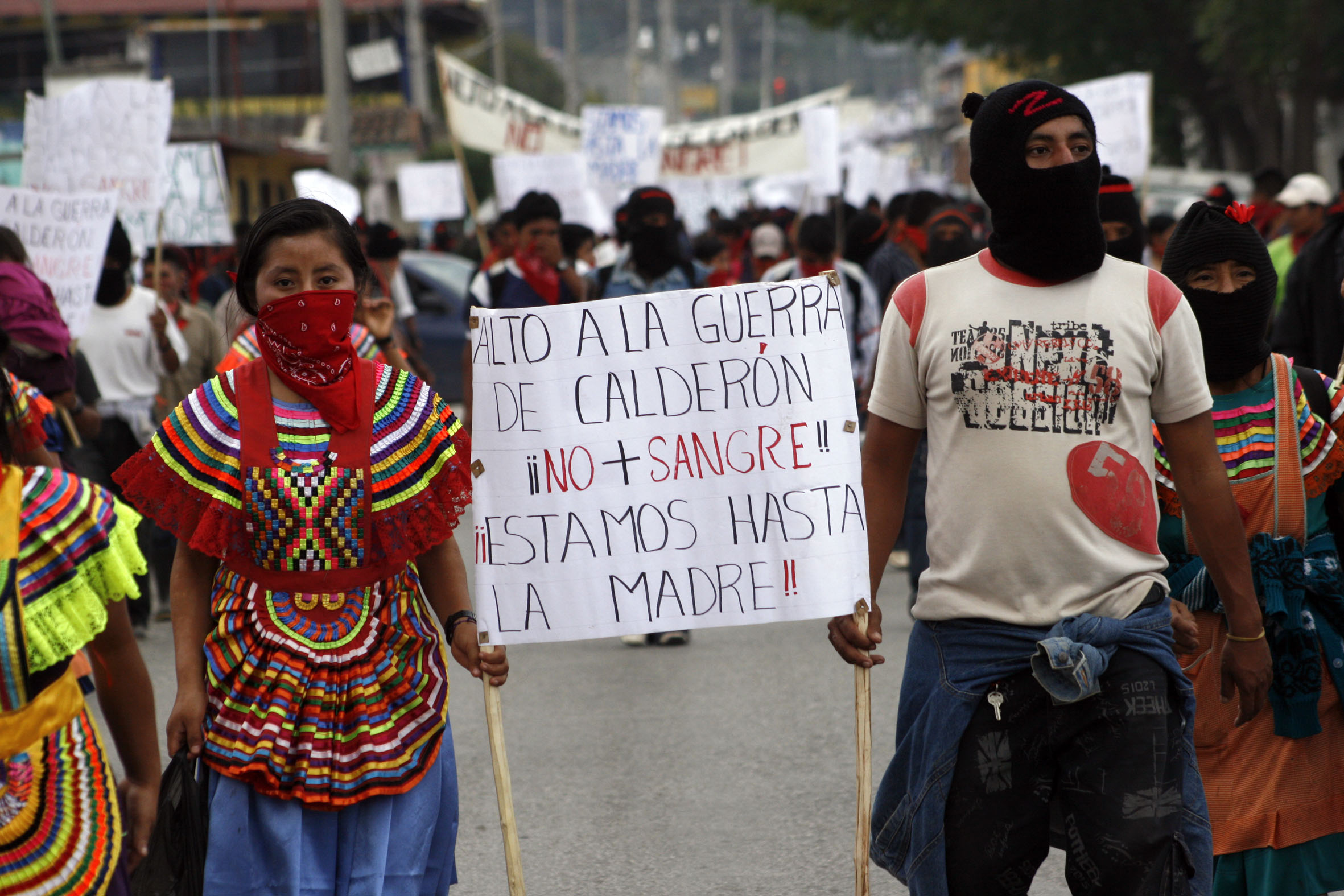
May 7, 2011. San Cristóbal de Las Casas, Chiapas, Mexico. Photo: Moysés Zúñiga, 2011.
The Tojobal women of the jungle region came from the caracol La Realidad, called "mother of sea snails of our dreams," to march and tell Felipe Calderón “estamos hasta la madre” (“we’ve had enough”).
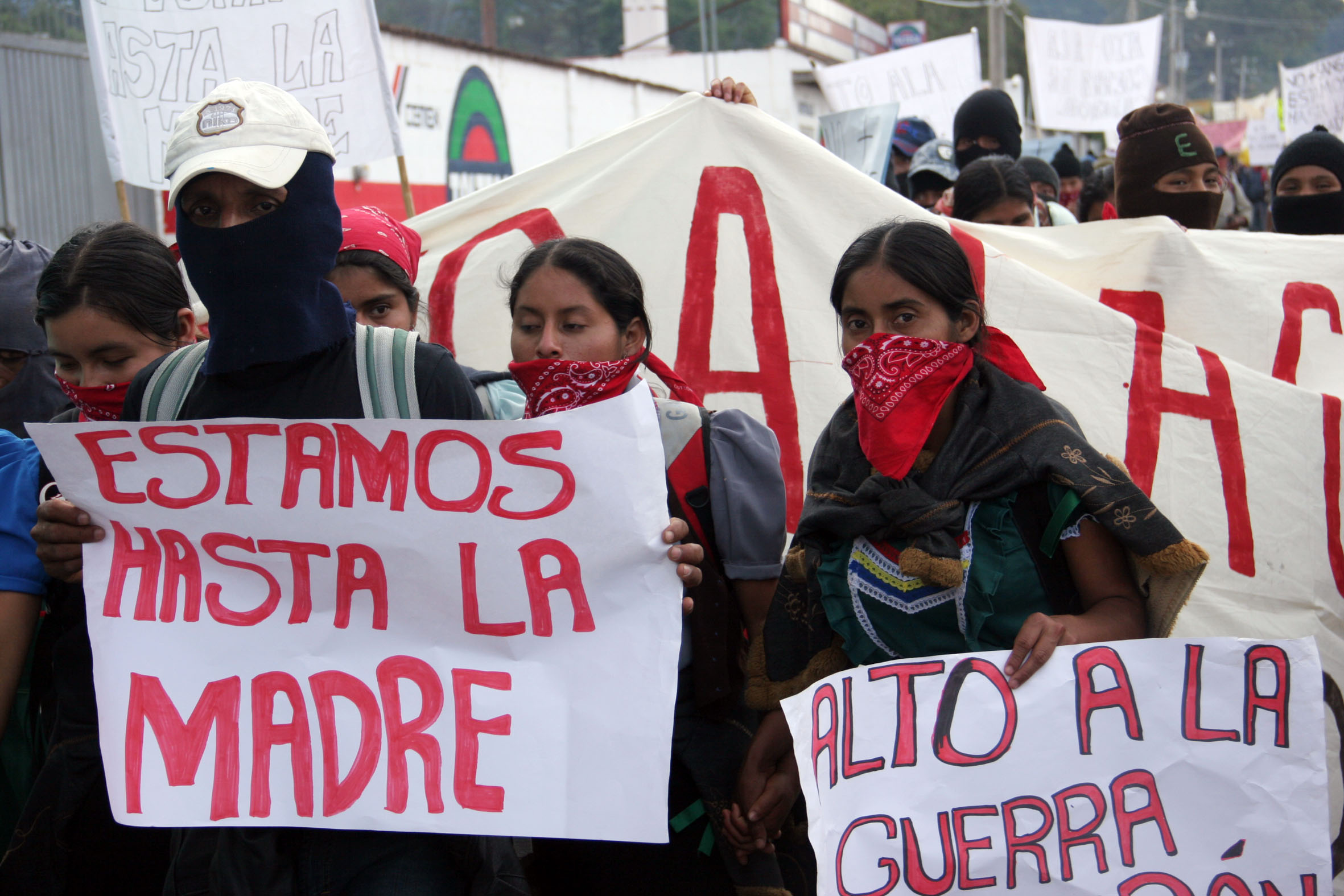
May 7, 2011. San Cristóbal de Las Casas, Chiapas, Mexico. Photo: Moysés Zúñiga, 2011.
¡Estamos hasta la madre! (“we’ve had enough”) This is what the Zapatistas say to indicate that the disorganized government is losing its fight against organized crime—which itself governs the state.

May 7, 2011. San Cristóbal de Las Casas, Chiapas, Mexico. Photo: Moysés Zúñiga, 2011.
The Zapatista men take care of their children and attend to other tasks previously designated only for women.

May 7, 2011. San Cristóbal de Las Casas, Chiapas, Mexico. Photo: Moysés Zúñiga, 2011.
Along with Che Guevara and other revolutionaries, warriors of American films are also in the collective imaginary of young Zapatistas. Bruce Lee is an idol.
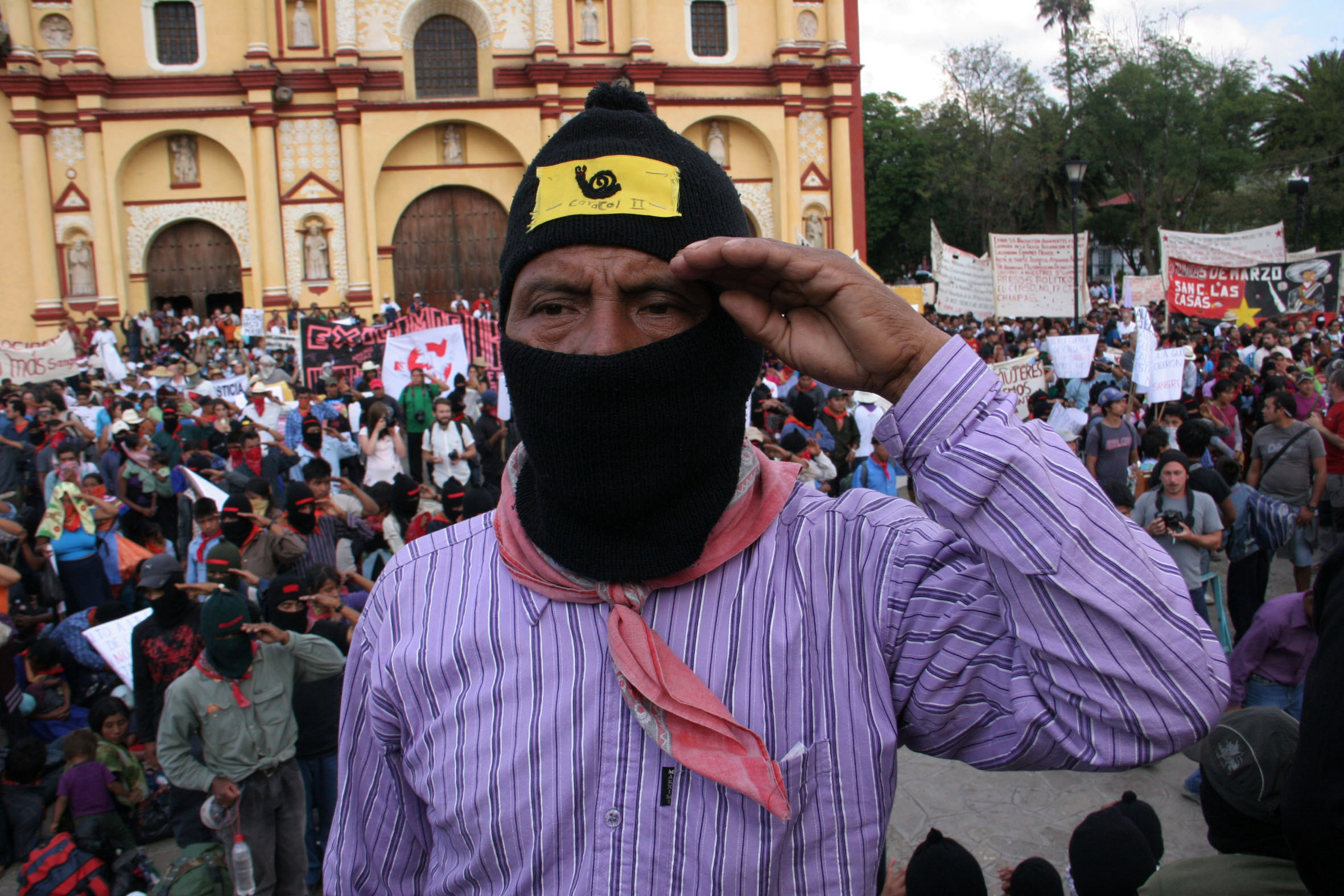
May 7, 2011. San Cristóbal de Las Casas, Chiapas, Mexico. Photo: Moysés Zúñiga, 2011.
La Plaza de la Paz and the Cathedral of San Cristóbal are once again the symbolic stage of the Zapatistas, whom they first housed in January 1994 as they carried out the first attempts of contact between the federal government and the revolutionary indigenous army.
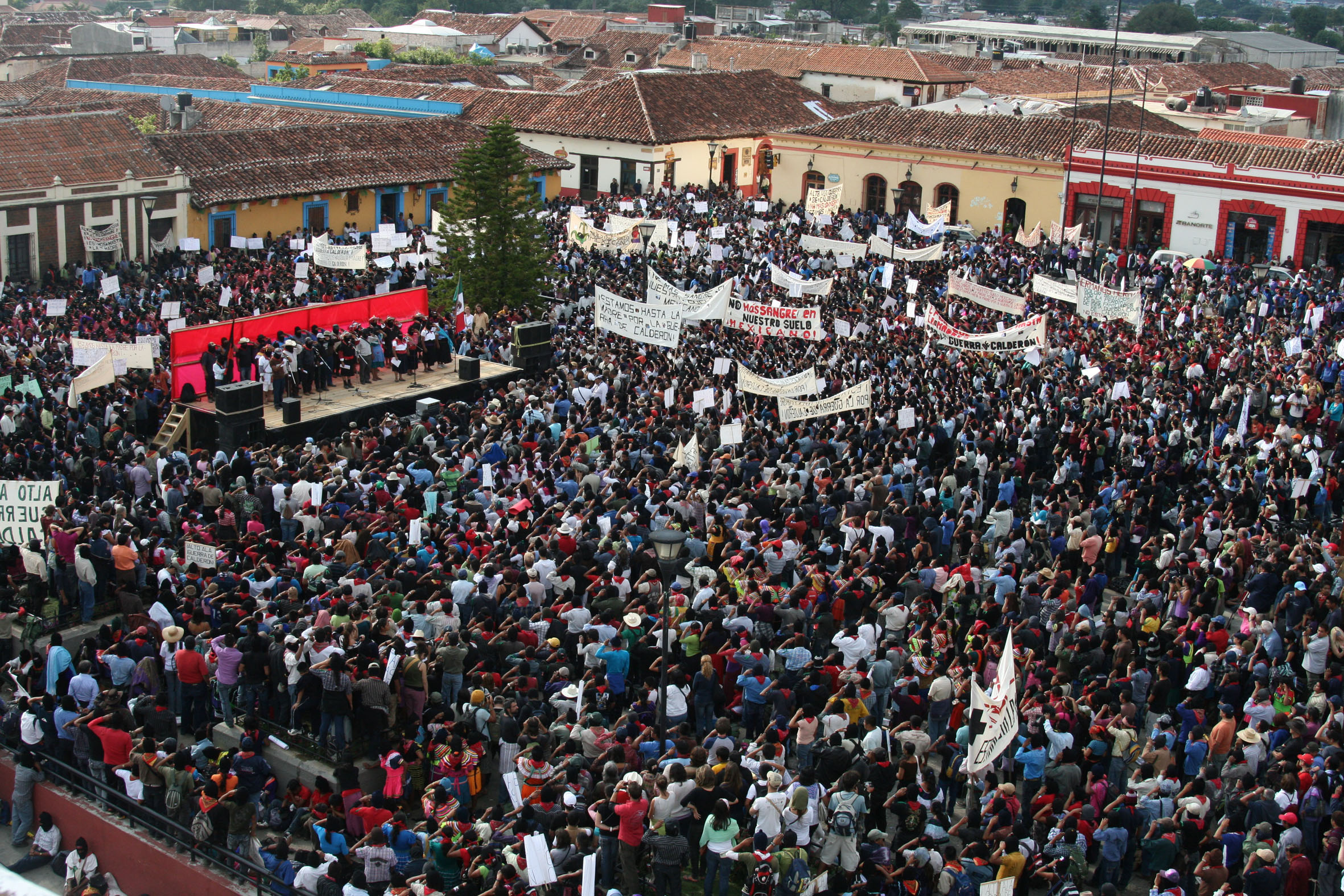
May 7, 2011. San Cristóbal de Las Casas, Chiapas, Mexico. Photo: Moysés Zúñiga, 2011.
28 Zapatista commanders, in front of 30,000 indigenous revolutionaries gathered at La Plaza de la Paz, read the statement that synchronized the event with the march of the Movimiento por la Paz con Justicia y Dignidad de Toluca moving towards Ciudad Universitaria in Mexico City.
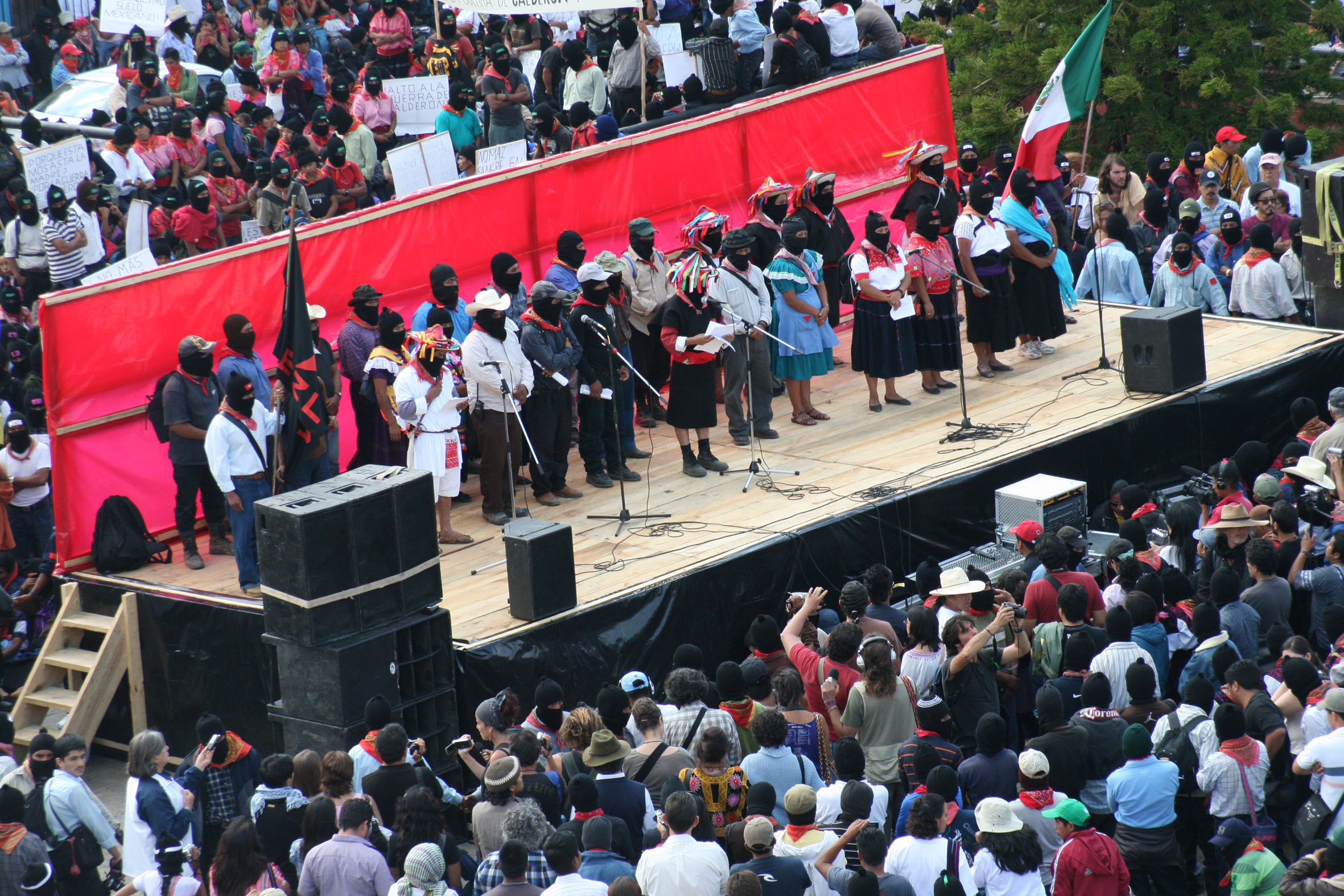
May 7, 2011. San Cristóbal de Las Casas, Chiapas, Mexico. Photo: Moysés Zúñiga, 2011.
More scenes from the gathering in La Plaza de la Paz.
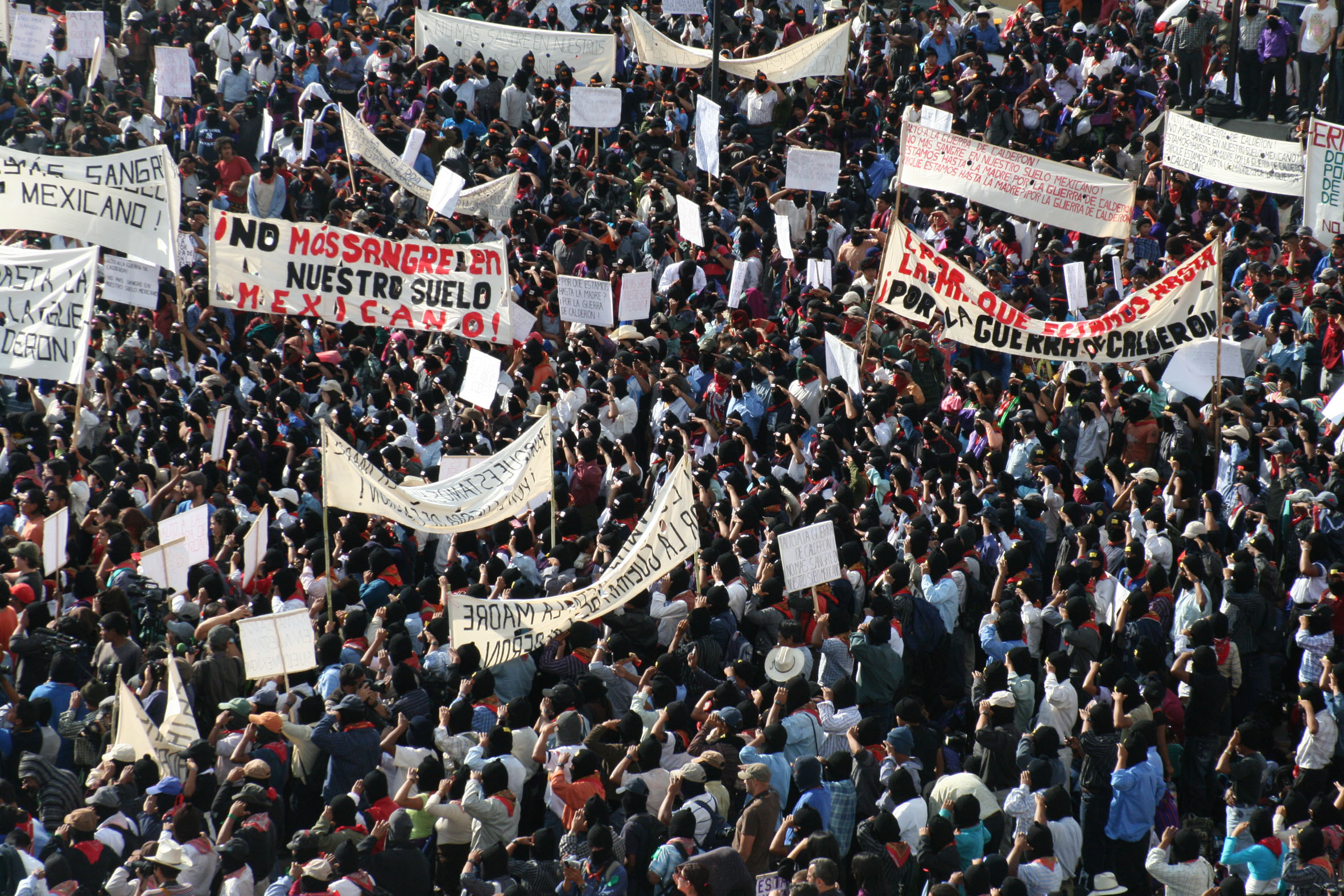
May 7, 2011. San Cristóbal de Las Casas, Chiapas, Mexico. Photo: Moysés Zúñiga, 2011.
More scenes from the gathering in La Plaza de La Paz.
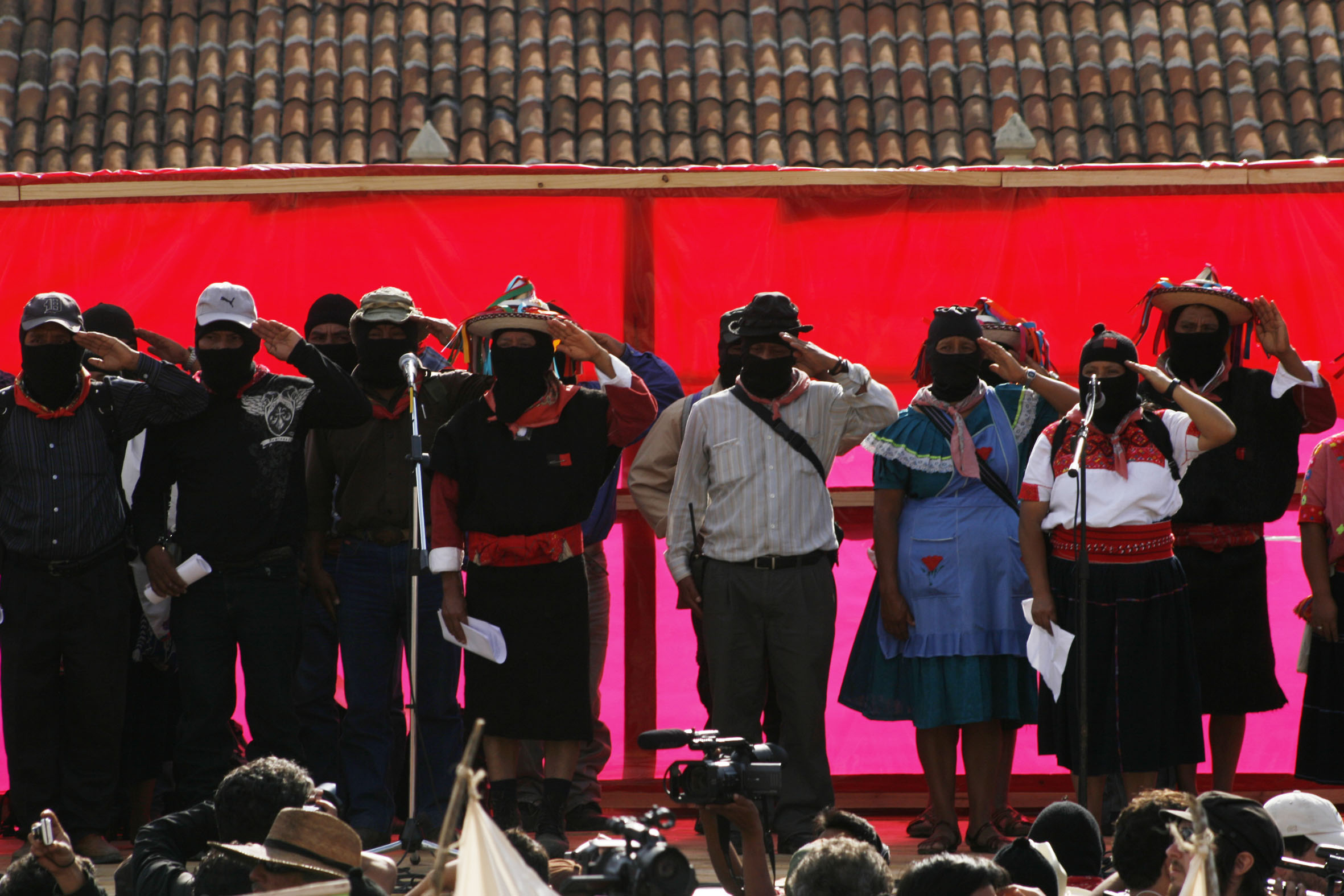
May 7, 2011. San Cristóbal de Las Casas, Chiapas, Mexico. Photo: Moysés Zúñiga, 2011.
Comandante David of the Oventic caracol read the Zapatista statement and led the flag raising ceremony in La Plaza de la Paz.
On 7 May 2011 and again on 21 December, 2012, two marches led by the Ejército Zapatista de Liberación Nacional (Zapatista Army of National Liberation, or EZLN) and their supporters once again demanded that the country acknowledge “those without a name and those without a face.” Both marches took place in silence.
On 7 May 2011, 50,000 Zapatistas walked in silence into the city of San Cristóbal de Las Casas in the state of Chiapas. It had been more than ten years since so many had come out en masse, and they had a strong reason for being present in the streets of the Vieja Jovel. The Zapatistas rose to the call of the poet Javier Sicilia, whose son Juanelo—who was barely over 20 years old—had just been murdered along with six of his friends in the city of Cuernavaca in the state of Morelos.
Within the first few hours, 50,000 Mayans came from the five autonomous Zapatista regions and marched in silence to five cities in Chiapas: Ocosingo, Palenque, Altamirano, Las Margaritas, and San Cristóbal de las Casas, the same cities that they had taken with weapons on the first day of 1994. They walked in silence, with dignity. It was the largest public mobilization in the history of the EZLN, a massive, disciplined, and simultaneous action, unseen since the days of the insurgent uprising on 1 January 1994.
There was no communiqué during the march on 21 December 2012. No word arrived until the late afternoon, while the media were falling over themselves with Mayan prophecies about the end of the world.
It was a poem:
¿Escucharon?
Es el sonido de su mundo derrumbándose.
Es el del nuestro resurgiendo.
El día que fue el día, era de noche.
Y noche será el día que será el día”
¡Democracia!
¡Libertad!
¡Justicia!
Did you hear?
That is the sound of your world crumbling. It is the sound of ours reemerging.
The day that was the day, it was night.
And night will be the day that will be the day.
Democracy!
Liberty!
Justice!
That day, we saw their dignified presence, the validity of the “
¡Ya Basta!” that the Zapatistas had pronounced on 1 January 1994. They rebelled before the world and demonstrated the coherence between what they say and what they do. It was a lesson in dignity.
Some of the youth that marched in December had been born since the emergence of the Zapatista struggle; the oldest of them were 18 years old. One could see the future of the struggle in the men and women who walked along with their babies; one could see the struggle’s meaning and understand the motivation for continuing to fight.















Discussion of "And the Silence Became Poetry and Mexico Listened"
Add your voice to this discussion.
Checking your signed in status ...